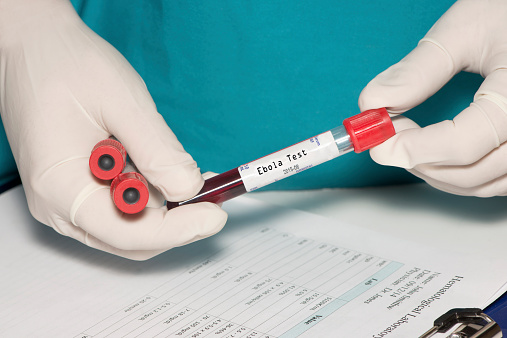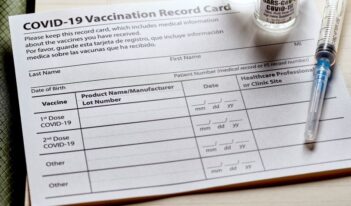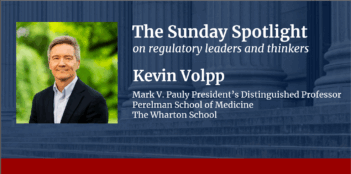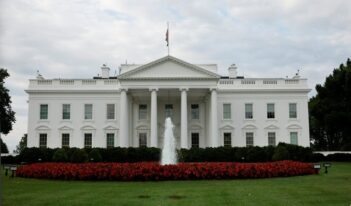
Public fears of Ebola give health officials an opportunity to harness public attention for greater good.
A rash of recent news stories have documented Americans’ increasing fear of Ebola. That fear is unpleasant, and it can be costly and even dangerous. But it also can be an opportunity for the government officials who will be coordinating the federal response to outbreak risk.
Early agency attempts to communicate with the public about Ebola have focused on bare facts and bare numbers. On this score, the Centers for Disease Control and Prevention (CDC) and Ron Klain, President Obama’s new “Ebola czar,” can do better.
Research on risk communication suggests that at least two additional strategies are worthwhile. First, officials can put the numbers in context by reminding the public that contracting Ebola is less likely than dying of virtually any other cause: as of this writing, the U.S. has had one Ebola death, while over the last month 200,000 people in the U.S. have died of other causes. Second, health officials can work to communicate the risks in pictures. For many people, pictures are clearer than words. This is particularly true for people whose math skills are less honed.
For best results, public health officials can even combine strategies: numbers, context, and pictures.
If all this risk communication goes well, more Americans will understand that it is really, really unlikely that any particular American will be exposed to Ebola, much less contract it.
But that doesn’t mean people won’t be scared. Ebola is a scary disease. Even if people understand that the chance of infection is tiny, they may still be frightened.
People may even realize their own fear is unreasonable. But knowing that doesn’t necessarily mean the fear will go away. Fear is an emotion. It’s hormonal. It’s personal. It’s hard-wired. It’s complicated. It’s not always controllable by wishing it away.
But that’s okay. Regulators don’t need to ignore or dismiss public fear any more than individuals need to ignore their own fear. Fear isn’t just some sort of cruel cosmic joke on humanity: it’s a physiological experience that tells us, “Hey! Pay attention!”
The main thing regulators can do when public fear remains in the face of objective numbers is help people see what to do with their fear and what to pay attention to.
Thus far, the CDC’s strategy has been to assure people that they are at minimal risk even if they have been exposed to Ebola and to reassure the public that government agencies and international partners are on top of things.
This is the regulatory equivalent of a police officer telling a group of concerned neighbors, “Nothing to see here, folks. Move along.”
Sometimes, of course, there really isn’t anything to see. But in that case, if people want to hang around, they may as well be encouraged to pick up neighborhood litter while they wait.
The same holds true for any other fixation of public attention. If everyone is watching, give them something important to watch and something useful to do about it.
Watch what, you say? And do what about Ebola? Well, that’s what we need Ron Klain and the CDC to tell us.
More specifically, the question government officials should ask themselves is: How can the public manage fears of this risk in a way that is just as well for them to be doing anyway?
Fear tells people that Ebola is their enemy, and it primes them for action against that enemy. That means we have a population primed for action against a common enemy. So, what can the average member of the public do to fight that enemy? How can we spend all this fearful attention in the best possible way?
My specialty is risk regulation, not communicable diseases. But based on the excellent work the CDC has done in the past (much of which is public and widely available), here are at least three concrete strategies for reducing the (already admittedly tiny) risk of contracting and spreading Ebola. Each of these strategies also has ancillary benefits that make them beneficial habits in any case.
1. Wash Your Hands. The CDC advises people traveling to areas affected by an Ebola outbreak to “practice careful hygiene,” including by washing hands “with soap and water or an alcohol-based hand sanitizer.” Doing so can prevent the spread of Ebola. But it turns out that clean hands also save lives from many other sources. The CDC calls handwashing a “do-it-yourself vaccine,” and recent research reports that it is “the single most cost-effective means of preventing infectious disease.”
2. Don’t Cry Wolf: Get a Flu Shot. Flu season is just getting started, but already news stories around the country have chronicled over 5,000 Ebola false alarms, many if not most from people who turn out to have the flu. It’s understandable how this can happen: early symptoms of the flu look a lot like early symptoms of Ebola, and many of these people must be honestly frightened. But mistaking the flu for Ebola isn’t just scary for the person who is ill, for their family, their friends, and their community: it also poses real costs for health care workers who are already on high alert and who could better spend their time on other patients.
Flu shots reduce the risk of these false alarms. And we should all get flu shots anyway: the CDC recommends flu shots for everyone over six months of age. Why? Because flu shots can keep you from getting sick from the flu, can make you less sick if you do get the flu, and can keep you from exposing people around you to the flu, as well.
In fact, the CDC reports that “one study concluded that one death was prevented for every 4,000 people vaccinated against the flu.” If that’s right, it means that if the entire American population got a flu shot to avoid false Ebola alarms, it would save almost 80,000 lives this year alone. By comparison, as of now, the global count of Ebola deaths from this latest outbreak stands at less than 5,000.
3. Stay Home If You Are Sick. The CDC has come under sharp criticism recently for apparently permitting Ebola-exposed Dallas nurse Amber Vinson to travel on a commercial airline when she had reported a low-grade fever. Interestingly, the decision to fly wasn’t in line with the CDC’s own general recommendations even if Vinson had only had the flu. The CDC recommends that people stay home from work, school, social events, and public gatherings for at least 24 hours until after their fever is completely gone. Why? Staying home if you are sick reduces the number of people exposed to your illness. Like getting a flu shot, this can help reduce the number of people who get the flu—and the number of people exposed to false Ebola alarms.
These three habits—staying home when sick, washing hands, and getting flu shots—are examples of what I would call a “just as well” strategy. Agencies can battle Ebola—or indeed, any other fearful but unlikely occurrence—by identifying things that can help individuals take control of their fears, while also getting a kick-start to action that is “just as well” to do anyway.
Why is a “just as well” strategy the right approach to managing public fear?
First, it takes public fears seriously by giving people concrete actions to take to gain ownership over their own anxieties. That is a psychological benefit in itself.
Second, it uses fear as a valuable tool instead of treating it as a second enemy. The danger of fear is that it can give us blinders; it can lead us to lose sight of the important things that are just beyond our tunnel vision. A “just as well” strategy takes advantage of agency expertise to point public attention towards actions that are valuable regardless.
And finally, a “just as well” strategy treats members of the public like the allies they can be in what is honestly a difficult battle against a frightening foe.
Americans are primed to fight. Now we need our new Ebola czar to unveil the battle strategy.




